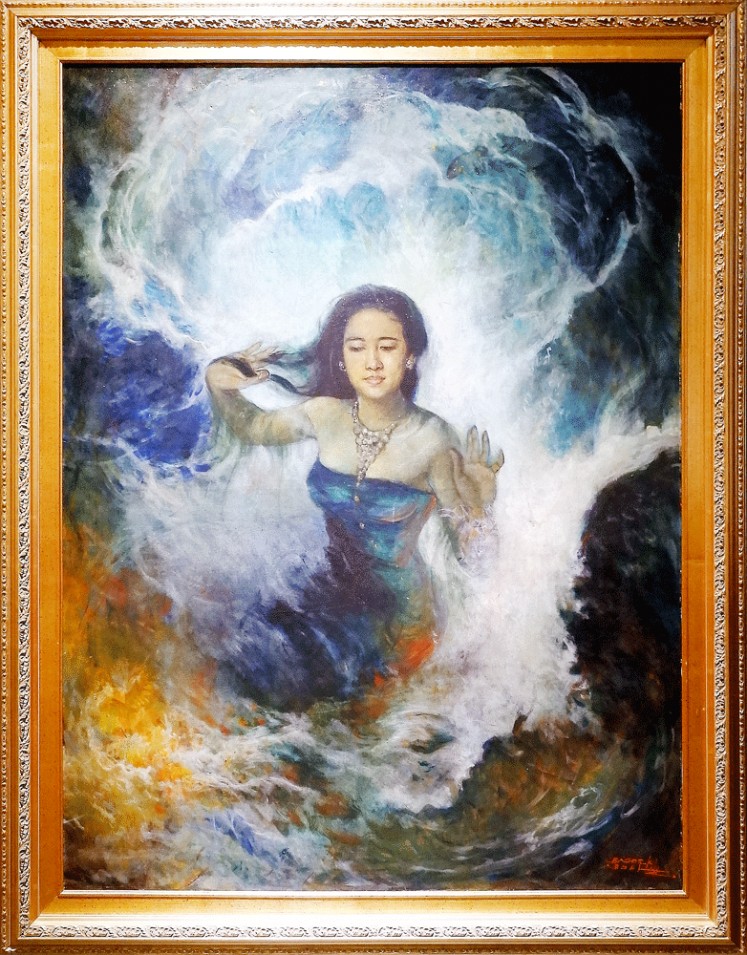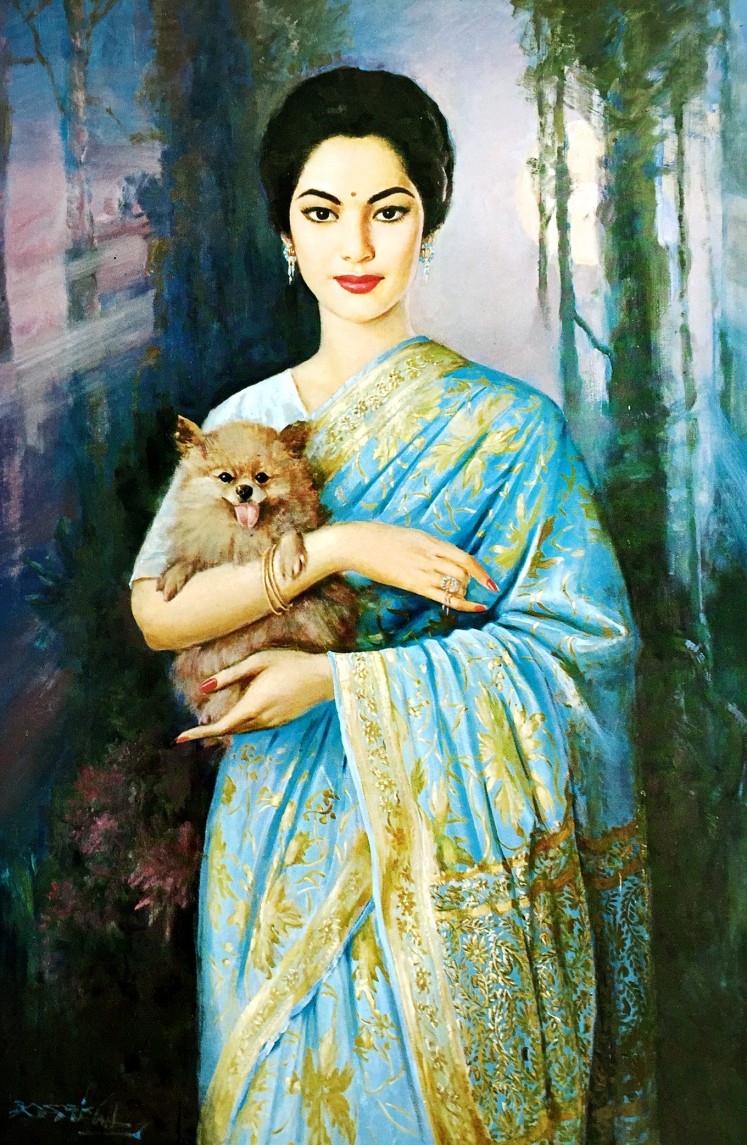Popular Reads
Top Results
Can't find what you're looking for?
View all search resultsPopular Reads
Top Results
Can't find what you're looking for?
View all search resultsCelebrating Basoeki Abdullah's legacy
World-renowned painter Basoeki Abdullah left masterpieces that still inspire today’s generation of artists.
Change text size
Gift Premium Articles
to Anyone
The Basoeki Abdullah Museum in South Jakarta was where the Indonesian maestro painter was murdered on Nov. 5, 1993.
Before opening its door to the public in 2001, the museum was Basoeki’s private house where the 78-year-old fell victim to a burglar who happened to be his gardener. The painter was beaten to death when he tried to stop his employee from stealing a collection of expensive watches.
The watches and a blood-stained pajama and glasses that the renowned artist was wearing at the time of the tragedy are on display in the museum, which is home to 720 paintings and 123 works of art he had collected throughout his life.
After his death, Basoeki is still admired for his beautiful landscape paintings of Indonesia’s nature and portrait paintings of important public figures across the globe, from Indonesia’s first president Sukarno to India’s Mahatma Gandhi.
“There are no other painters like Basoeki Abdullah,” the National Gallery’s former head, Tubagus Sukmana, said.
The museum, which turns 17 this year, is displaying Basoeki’s paintings in an exhibition titled “Spirit Potret” (the Spirit of Portrait), which runs until Thursday.
Prior to the event, his paintings that were collected by the country’s late presidents Sukarno and Soeharto were showcased at the National Gallery in August in an exhibition titled “Indonesia Semangat Dunia” (Indonesia, the World Spirit).
Nyi Roro Kidul by Basoeki Abdullah (-/A.Kurniawan Ulung)One of the paintings that grabbed the attention of most visitors was Perkelahian Antara Rahwana dan Jatayu Memperebutkan Sinta (The fight between Rahwana and Jatayu to save Sinta), which tells of the sacrifice of Jatayu, a gallant eagle in the Ramayana story, in saving Sinta, the wife of its friend Rama, from Rahwana who kidnapped her.
Born on Jan. 27, 1915, in Surakarta, Central Java, Basoeki was the grandson of national hero Wahidin Sudirohusodo. His artistic ability, however, was inherited from his father, Abdullah Soerjosoebroto, a renowned landscape painter.
Basoeki was a Western-educated painter who started painting when he was 4 years old. He received a scholarship to study at Academie Voor Beldeende Kunsten in the Netherlands from 1935 to 1937 and then pursued his higher education at the Academy of Fine Arts in Paris.
After completing his studies, he joined the Center of People’s Power (Putera) in 1942, where he showcased his skills with fellow maestros like Affandi and S. Sudjojono.
Tubagus said Sudjojono, known as the father of modern Indonesian art, was one of Basoeki’s biggest critics who said his work often lacked social commentary and it was aimed to meet market demands because conditions for Indonesia and its people were not always as pretty as what Basoeki presented on his canvasses.
Despite Sudjojono’s harsh criticism, Tubagus said Basoeki, whose works were influenced by English Romantic painter John Martin, remained influential today.
Tubagus, who has been head of the National Gallery for 12 years, added that there were still young Indonesian artists who follow Basoeki’s style.
“One of his favorite subjects was Mount Merapi [in Magelang, Central Java]. For him, it symbolized the spirit of patriotism that never dies like the lava of the volcano,” said Tubagus.
Under the Moonlight by Basoeki Abdullah. (JP/Agus Dermawan T.)Basoeki was a realist and a naturalist painter who believed in Javanese mythology. One of his masterpieces is a painting that depicts Nyai Roro Kidul, a beautiful mythical queen of the Southern Sea.
“To get the queen’s permission to paint her, he sat on a coral reef to do tirakat [a soul-searching ritual] in the Southern Sea in which he placed an empty bottle. When the bottle returned it was filled with water and a piece of white coral reef,” Tubagus said.
“How did the piece of coral and water get into the bottle? This might be hard to understood, but for Basoeki it was a sign that he had received the queen’s blessing.”
Basoeki’s pantings are still sought after by art collectors and his original works are so expensive and hard to find that many of them only have replicas.
Tubagus said replicating original paintings was not against the law as long as the painters do not claim that their works were authentic and the signature of the original painter was not falsified.
Street painter Casjiwanto said he often made replicas of paintings of renowned artists, including Basoeki. “Ever since I was a university student, I was often asked by people to replicate Basoeki’s paintings, such as the one titled Jaka Tarub.”
He added that when he was an art student at Jakarta State University (UNJ), painting portraits was the most difficult.
Casjiwanto, whose studio is located in the Kota Tua area in West Jakarta, said one of Basoeki’s skills that painters of today’s generation could not rival was how he was able to embellish the faces of the models he painted so that they looked more beautiful than the originals.













